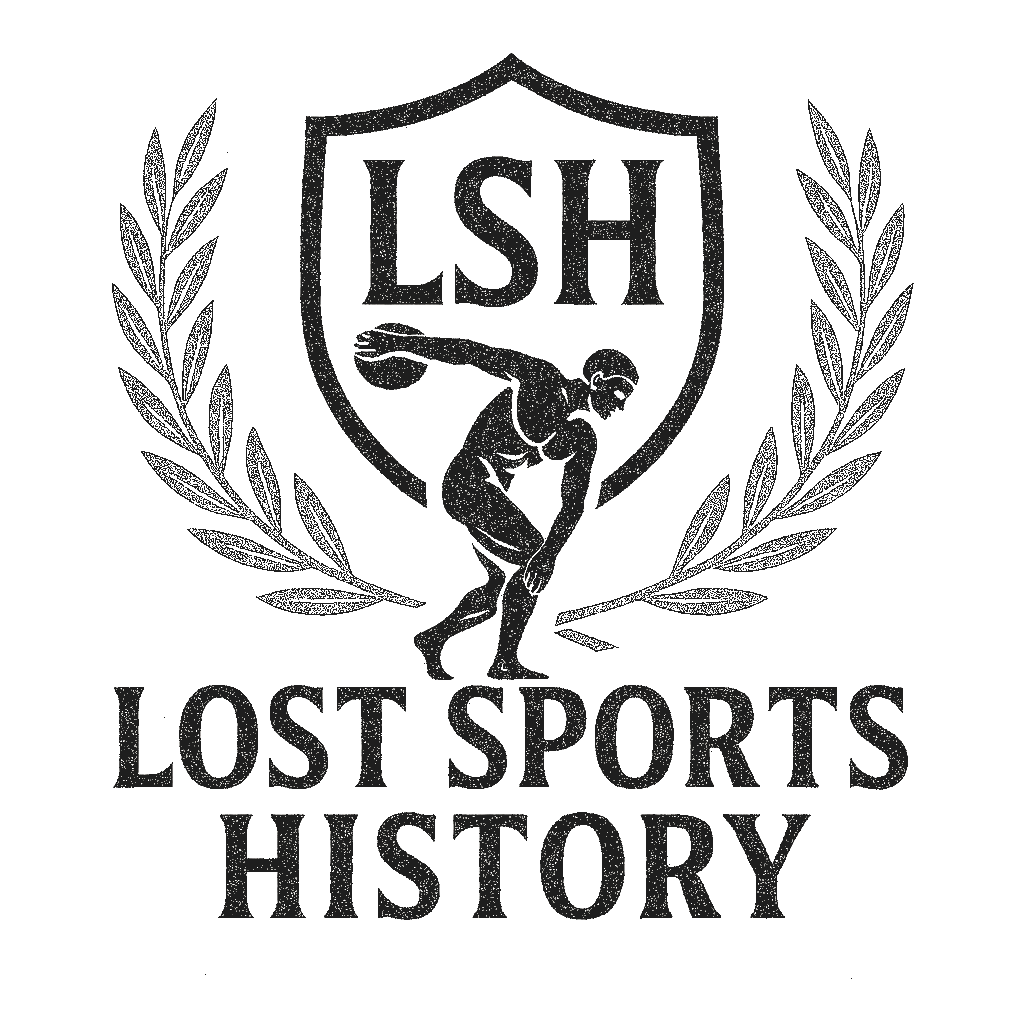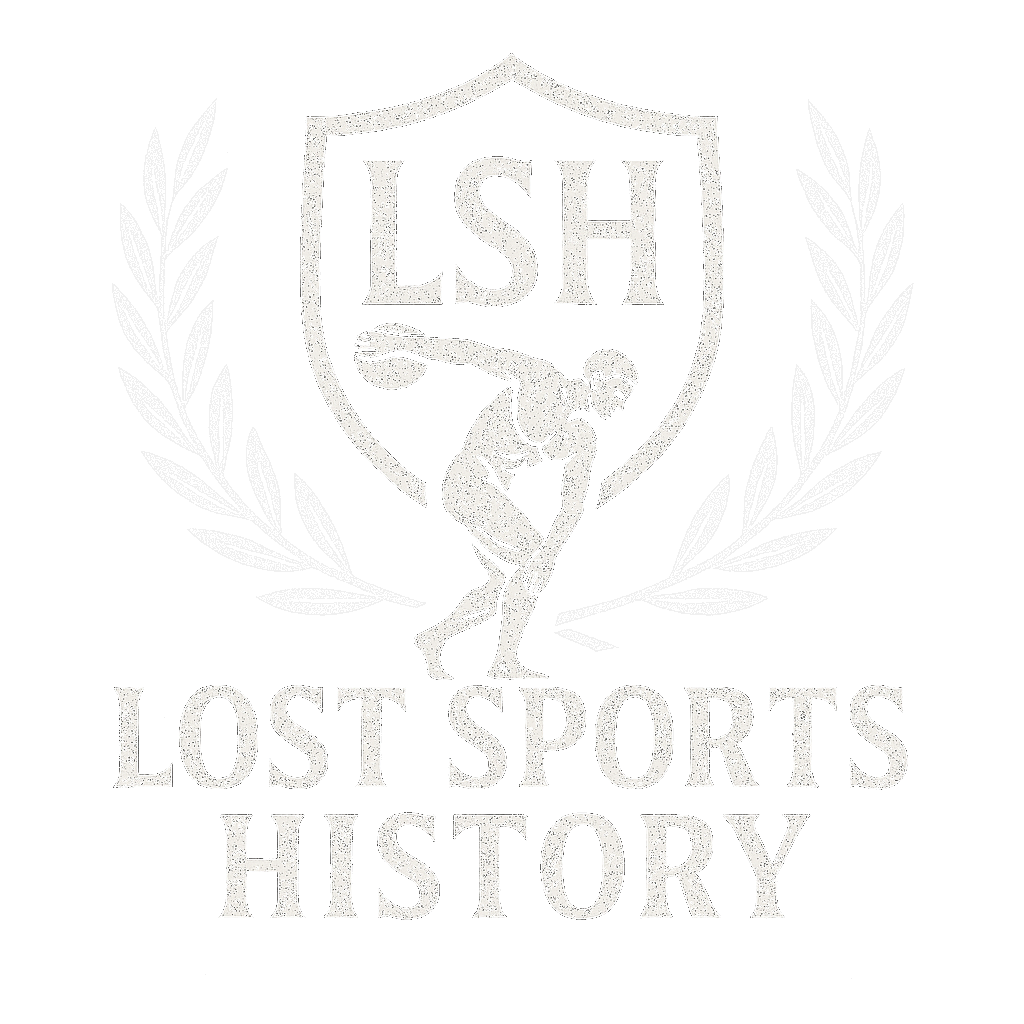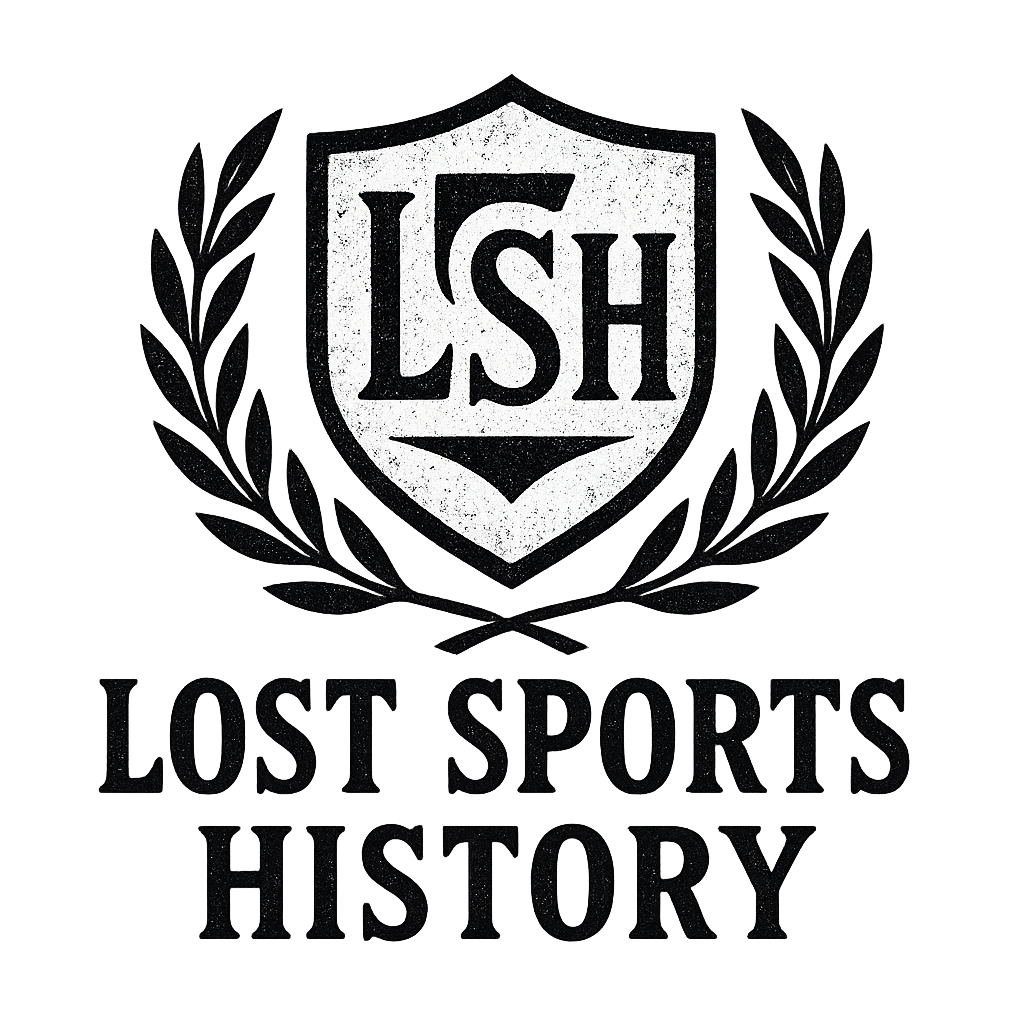Now Reading: How Ancient Sports Shaped Modern Games
-
01
How Ancient Sports Shaped Modern Games

How Ancient Sports Shaped Modern Games
Ancient sports have had a significant impact on the games we play and watch today. From the arenas of ancient Greece to modern Olympic stadiums, the history of athletic competition is a captivating tale of human achievement and cultural connection.
The influence of ancient sports on modern games is evident in various aspects of our athletic traditions:
- Competition Structure: The format of tournaments and championships
- Athletic Values: The pursuit of excellence and fair play
- Sporting Events: Many modern sports trace their roots to ancient practices
- Cultural Impact: The role of sports in society and community building
When you watch a wrestling match or track event today, you’re witnessing the continuation of practices that began thousands of years ago. These ancient traditions have shaped not just how we compete, but why we compete.
Understanding these historical connections transforms how you experience modern sports. Each game becomes a link in an unbroken chain of human athletic achievement, connecting you to generations of athletes who pushed the boundaries of physical excellence.
The Ancient Olympic Games and Their Enduring Legacy
The Olympic Games originated in ancient Olympia, where the first recorded competition took place in 776 BC. This event marked the beginning of a long-standing tradition that would influence athletic competitions for thousands of years.
Key Events of the Ancient Games
The ancient games included several important events:
- Stadion – A 200-yard foot race considered the most prestigious event
- Pale – Wrestling matches where competitors fought until one admitted defeat
- Pygme – Boxing contests using leather straps wrapped around fighters’ hands
- Tethrippon – Chariot racing that showcased both athletic skill and wealth
Religious Significance of the Ancient Olympics
At their core, the ancient Olympics served as a religious festival honoring Zeus. Athletes performed sacred rituals, made offerings, and competed in the shadow of the Temple of Zeus. The games’ religious significance created a unique atmosphere where athletic excellence merged with divine worship.
Legacy of the Ancient Games in Modern Olympics
The structure of these ancient games lives on in modern Olympic traditions. The four-year cycle between games, known as the Olympiad, remains unchanged. The practice of lighting a sacred flame persists through today’s torch relay. The ancient concept of bringing athletes together in a single location for multiple events has become the standard format for major sporting competitions worldwide.
The values emphasized in the ancient games, such as individual excellence, fair competition, and the celebration of human physical achievement, continue to shape modern Olympic sports.
Cultural Significance of the Ancient Games
The ancient Olympic Games were more than just a sports event; they played a significant role in promoting peace through the ekecheiria – the sacred Olympic truce. This incredible tradition required all Greek city-states to:
- Cease ongoing conflicts
- Allow safe passage for athletes and spectators
- Suspend legal disputes
- Prohibit military activities near Olympia
The Games provided an opportunity for rival city-states to compete in sports instead of going to war. Athletes from Athens, Sparta, and other Greek regions trained together, building friendships that extended beyond the competition.
Shared Cultural Practices
During the Games, various cultural practices were observed:
- Common religious rituals honoring Zeus
- Unified calendar system based on Olympiads
- Standardized athletic rules across regions
- Cultural exchanges through poetry and art performances
Influence of ancient sports on Modern Sports Culture
The values established during these ancient gatherings continue to shape modern sporting culture:
- Fair play – Athletes competed under standardized rules
- Merit-based achievement – Victory determined solely by skill
- Individual excellence – Personal achievement celebrated alongside civic pride
- Cultural exchange – Sports as a bridge between different communities
The ancient Games created lasting traditions of peaceful competition and cultural unity that transformed rival city-states into a collective Greek identity. These gatherings established sports as a powerful tool for diplomacy and cultural exchange, a practice that remains relevant in today’s international sporting events.
Revival and Adaptation: The Modern Olympics
Pierre de Coubertin’s vision transformed ancient athletic traditions into a global celebration of sport in 1896. The French educator drew inspiration from the archaeological discoveries at Olympia, breathing new life into the ancient Greek legacy through the establishment of the modern Olympic Games.
The First Modern Olympics
The inaugural modern Olympics in Athens featured athletes from 14 nations competing in 43 events – a stark contrast to the ancient games’ Greek-only participation. This revival preserved essential elements while introducing innovations suited to the modern era:
- The Olympic Torch Relay – A modern interpretation of ancient Greek fire rituals, connecting past and present through a symbolic flame journey
- The Olympic Rings – Five interlocking circles representing the unity of the five continents, designed by Coubertin in 1912
- The Olympic Motto – “Citius, Altius, Fortius” (Faster, Higher, Stronger) embodying the ancient Greek pursuit of excellence
Changes in Events and Timing
The modern games incorporated traditional events like wrestling and running while adding contemporary sports. The quadrennial timing remained unchanged, honoring the ancient Greek calendar. The International Olympic Committee (IOC) adapted the sacred nature of the ancient games by establishing strict rules and protocols, creating a structured framework for international competition.
Global Impact
The revival sparked unprecedented global participation in athletics, transforming local traditions into universal sporting experiences. The modern Olympics bridge cultural divides through shared athletic pursuits, much like their ancient counterparts united Greek city-states.
Evolution of Athletic Competition: From Amateurism to Professionalism
Ancient Greek athletes competed purely for honor and glory. These competitors were amateur athletes who trained rigorously while maintaining their regular occupations as farmers, soldiers, or craftsmen. The concept of professional athletics would have been foreign to them.
The transformation from amateurism to professionalism marks a significant shift in sports history. The 20th century witnessed this dramatic change:
- Early 1900s: Athletes competed without monetary compensation
- 1950s-1960s: Introduction of “shamateurism” – hidden payments to athletes
- 1970s-1980s: Gradual acceptance of professional athletes in major competitions
- Present day: Full professionalization with athlete contracts, sponsorships, and endorsements
The structure of sporting events has evolved alongside this professional transformation. Modern competitions now feature:
- Specialized training facilities
- Advanced performance metrics
- Professional coaching staff
- Sports science integration
- Media coverage and broadcasting rights
- Corporate sponsorships
The variety of events has expanded dramatically from ancient times. While the Greeks focused on combat sports and basic athletic contests, today’s sporting landscape includes:
- Team sports across multiple divisions
- Technology-enhanced competitions
- Gender-inclusive events
- Paralympic competitions
- Youth development leagues
This professionalization has created new opportunities for athletes to pursue sports as full-time careers, transforming what was once a pursuit of glory into a legitimate profession with substantial economic impact.
Awards and Recognition in Sports: A Journey Through Time
The sacred olive wreath, known as kotinos, represented the highest honor in ancient Greek athletics. These simple garlands, crafted from branches of the sacred olive trees near Zeus’s temple in Olympia, carried profound spiritual significance. Athletes competed not for material gain but for divine recognition and the glory of their city-states.

The transformation from olive wreaths to modern medals marks a significant shift in athletic recognition:
- Ancient Prizes
- Olive wreaths symbolized divine blessing
- Winners received free meals for life
- Cities often granted champions tax exemptions
- Statues erected to commemorate victories
- Modern Awards
- Gold, silver, and bronze medals
- Substantial prize money
- Endorsement deals
- National honors and recognition
The symbolism of athletic awards has evolved while maintaining its core purpose: recognizing excellence. Modern Olympic medals feature Nike, the Greek goddess of victory, preserving ancient connections. The three-tiered medal system, introduced at the 1904 St. Louis Olympics, creates a hierarchy of achievement that drives athletes to push their limits.
The financial rewards in modern sports reflect society’s shift toward professional athletics. Prize money ranges from thousands to millions of dollars, yet many athletes still cite the symbolic value of medals as their primary motivation. This blend of material and symbolic recognition creates a powerful incentive system that shapes contemporary athletic achievement.
Influence of Ancient Games on Specific Modern Sports Disciplines: Continuity and Evolution
Ancient Greek athletics laid the foundation for many modern sporting events. The pentathlon, a cornerstone of ancient Greek games, required athletes to master five distinct disciplines:
- Long jump
- Javelin throw
- Discus throw
- Foot race
- Wrestling
This multi-disciplinary approach lives on in modern competitions like triathlons and the modern pentathlon. These events test athletes’ versatility and endurance across different sporting domains, reflecting the ancient Greek ideal of all-around athletic excellence.
The ancient martial art of pankration shares striking similarities with modern Mixed Martial Arts (MMA):
- Combat Techniques: Both sports combine striking and grappling
- Limited Rules: Minimal restrictions on fighting methods
- Victory Conditions: Submission or knockout determines the winner
- Arena Setting: Matches take place in enclosed fighting spaces
Key differences between pankration and MMA include:
- Modern safety equipment and protective gear
- Structured weight classes
- Time limits and rounds
- Prohibited techniques to ensure fighter safety
The evolution from ancient combat sports to modern MMA demonstrates how historical athletic traditions adapt to contemporary standards while preserving their core essence. These adaptations reflect changing societal values and increased emphasis on athlete safety without compromising the spirit of competition.
Philosophical Legacy of Ancient Sports: Inspiring Modern Athletes
Ancient Greek athletes embodied the concept of arete – the pursuit of excellence in all aspects of life. This philosophical foundation shapes modern athletic mindsets through three core principles:
1. Mind-Body Unity
Ancient Greeks believed physical training enhanced mental capabilities. Modern athletes embrace this wisdom through meditation, visualization techniques, and mental conditioning alongside physical training.
2. Personal Excellence
The Greek ideal of aristeia – striving for individual greatness – drives today’s athletes to push beyond personal limits. This manifests in [goal-setting practices](https://pmc.ncbi.nlm.nih.gov/articles/PMC10819297/) and performance metrics tracking.
3. Virtue Through Sport
Ancient competitions developed character traits like courage, discipline, and honor. These values remain central to modern athletic education and sportsmanship codes.
The ancient Greek gymnasium served as both training facility and philosophical school. This holistic approach influences current athletic development programs that integrate:
- Mental resilience training
- Ethical decision-making
- Leadership development
- Character building
Modern Olympic athletes channel these ancient philosophies through ritualistic practices. Pre-competition routines mirror ancient ceremonial preparations. Athletes adopt meditation techniques similar to those used in ancient training grounds.
The Greek concept of agon – noble struggle – resonates in modern sports psychology. Athletes embrace challenges as opportunities for growth, viewing competition as a path to self-discovery and improvement rather than mere victory.

Conclusion: Embracing the Timeless Spirit of Sportsmanship
The connection between ancient and modern sports goes beyond time, shaping athletic traditions for thousands of years. From the sacred grounds of Olympia to today’s high-tech stadiums, the core values of competition, excellence, and human achievement remain the same.
Ancient sports continue to inspire innovations in modern athletics. The revival of historical games, such as the Mayan ball game Pok-ta-Pok, shows a growing interest in reconnecting with our athletic heritage. These rediscovered sports offer unique perspectives on physical prowess and strategic thinking.
The future of sports holds exciting developments rooted in ancient wisdom:
- Integration of traditional training philosophies with cutting-edge technology
- Revival of forgotten games adapted for modern audiences
- Emphasis on holistic athlete development, combining physical and mental disciplines
The influence of ancient sports on modern games is a testament to humanity’s everlasting quest for athletic excellence. As we strive to surpass human limits, the spirit of ancient athletics will continue to guide and inspire future generations.


















